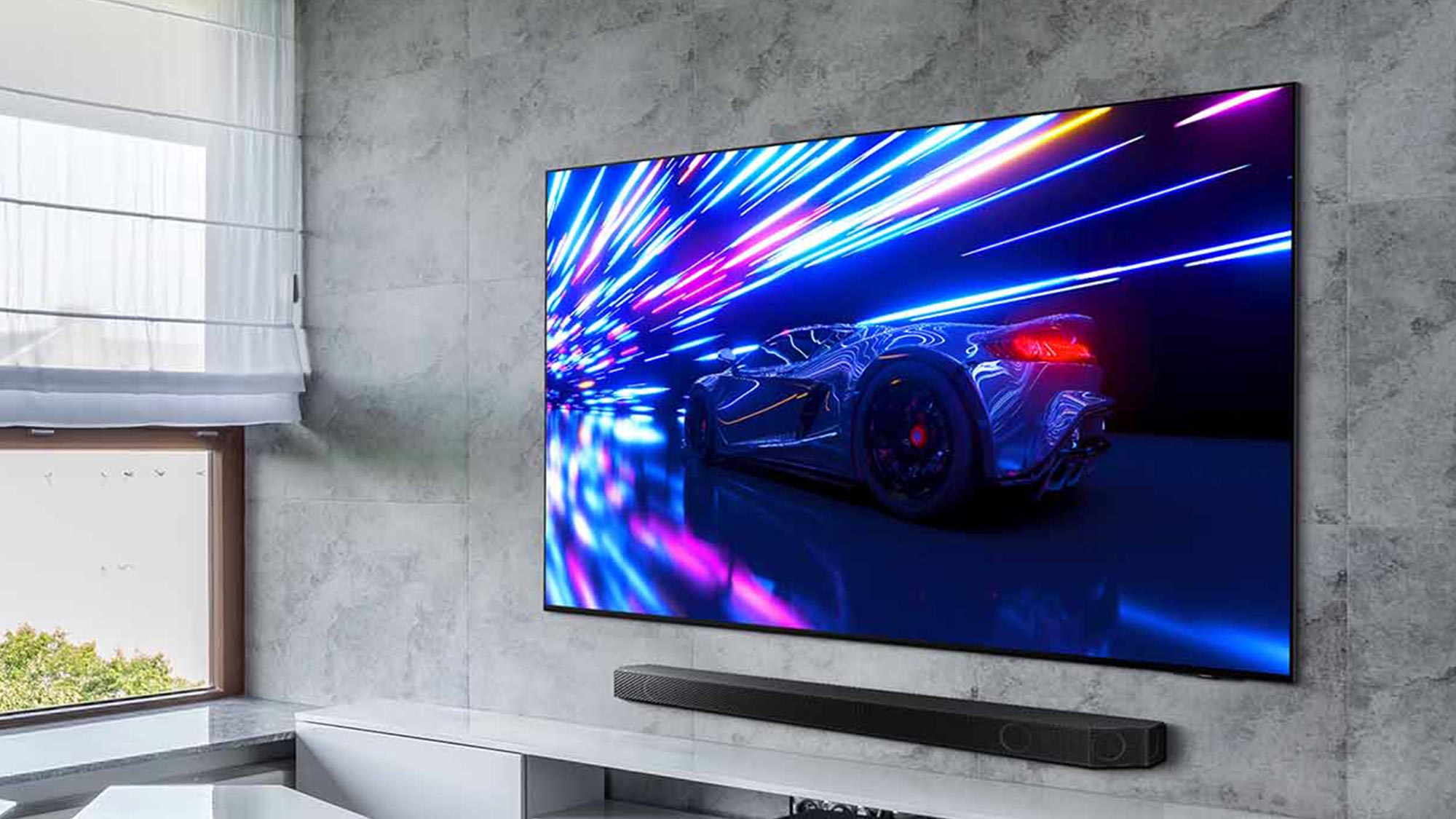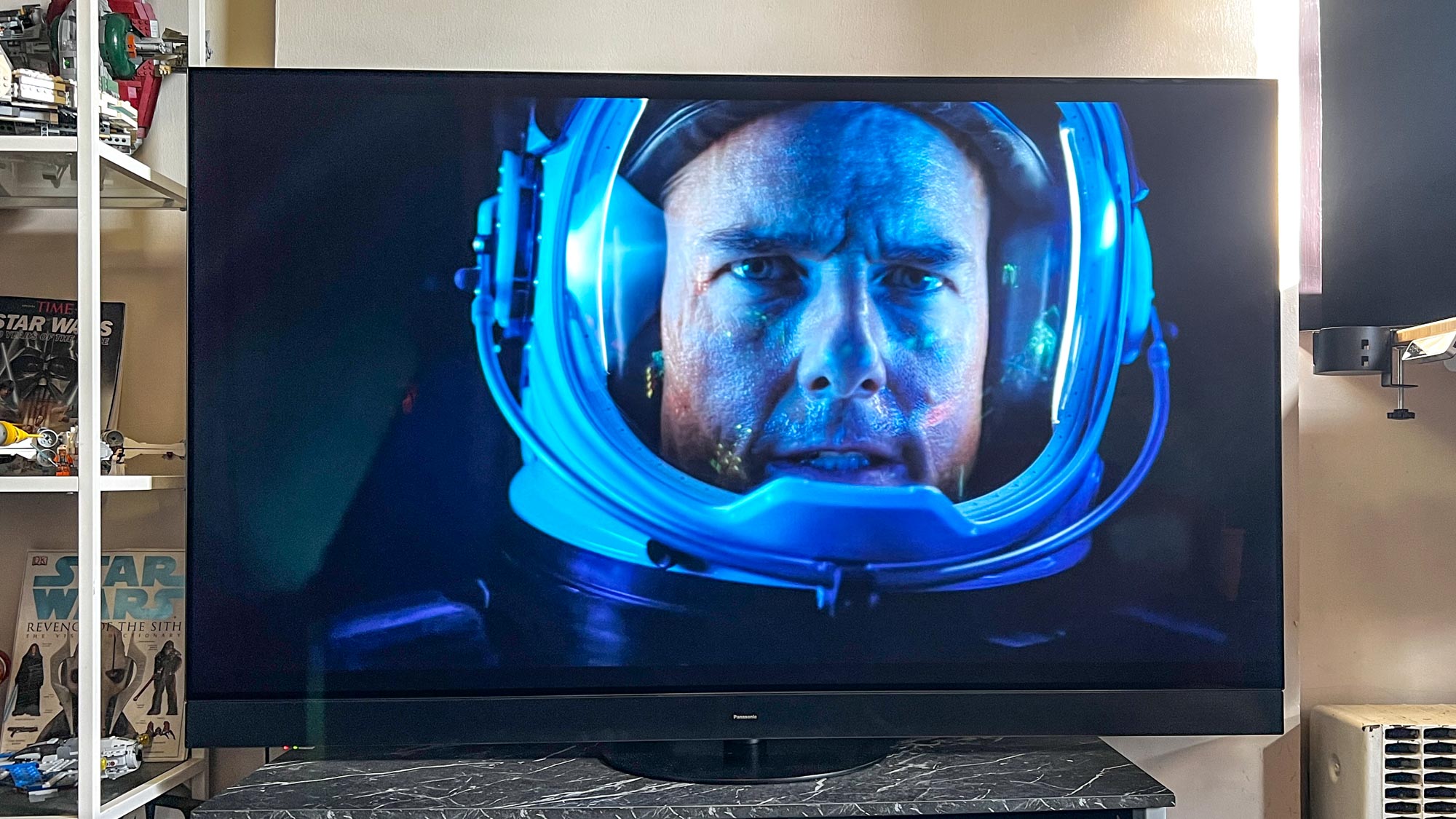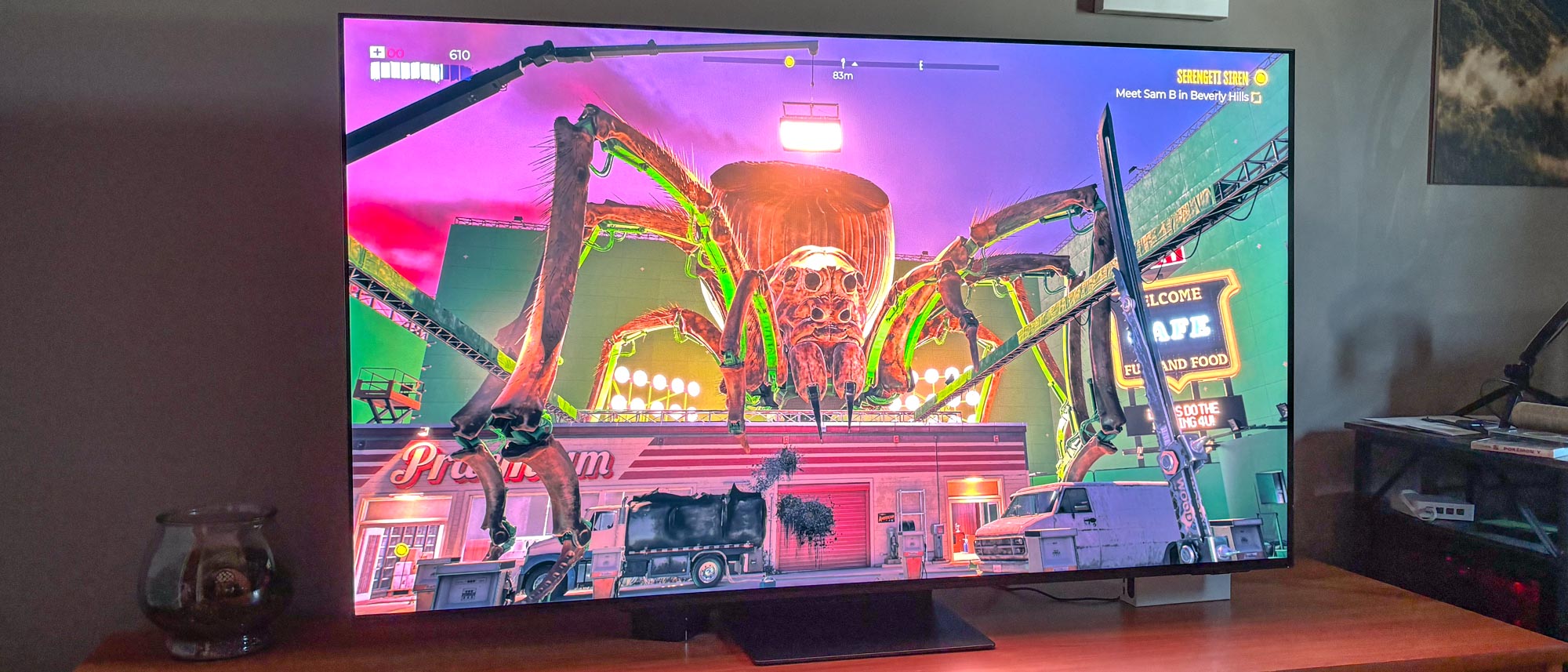
Following an eight year hiatus, Panasonic is returning to the U.S. with three new TVs. The star of the show is the Panasonic Z95A, its flagship OLED with some serious potential as one of the best TVs to debut this year — and it's got some tough competition, primarily in the form of the Samsung S95D OLED.
Both prove to be extremely pricey, well-rounded displays with a ton of features to meet all kinds of varied entertainment needs, including HDR coverage, gaming specs, and more. But neither are made equal.
In design and audio mainly, you'll see hefty variations that might sway your inevitable buying decision. And it's not like there's too much of a major difference between them when it comes to price either — with their 65-inch models seeing just a $100 difference.
From overall picture performance to advanced gaming features, let's dive into what makes either OLED model the better one to choose on your next TV purchase.
Panasonic Z95A OLED TV: was $3,199 now $2,999 at Amazon
Panasonic has returned to the US in style with one of the sleekest OLED TVs on the block. The Panasonic Z95A pulls out all the stops with a 160W speaker system, Dolby Atmos support, a 144Hz refresh rate, and gorgeous performance. It uses LG Display's Gen two MLA panel for one of the best views in the industry. It's made now all the better at a more affordable rate, down by $200 not a mere week following its debut.
Panasonic Z95A vs Samsung S95D: Specs compared
| Panasonic Z95A | Samsung S95D | |
|---|---|---|
| Sizes | 65" | 55", 65", 77" |
| Ports | 4 HDMI 2.1 | 4 HDMI 2.1 |
| Resolution | 3840 x 2160 | 3840 x 2160 |
| HDR | HDR10, HLG, Dolby Vision | HDR10, HDR10+ (Adaptive), HLG, |
| Smart TV software | Amazon Fire TV | Tizen |
| ATSC 3.0 support? | Yes | Yes |
| Processor | HCX Pro AI mk2 | NQ4 AI Gen2 |
Panasonic Z95A vs Samsung S95D: Design

Although both the Samsung and Panasonic flagships are OLED TVs, they differ slightly in their design, primarily the panel type. Samsung likes to leverage its own QD-OLED panels, which come straight from Samsung Display itself, and offer some improvements bred from similar technologies seen in Mini-LED TVs — primarily color quality and a better range in sizes.
On the other side of the spectrum is Panasonic, which doesn't have an OLED manufacturing plant of its own, and thus uses panels built by LG Display, in this case being the MLA gen two design, which for many offers the best viewing experience on the block. Though, this does come at the cost of additional TV sizes, and it why the Panasonic Z95A can only be bought in a 65-inch configuration.
That's all well and good, but what really makes them unique? Panasonic's MLA panel, or Micro Lens Array, is intended to improve upon brightness significantly. The panel was only just revealed at CES 2024 and has already become a major staple in the TV sphere due to its incredible detail enhancer and META Multi Booster.

And with that powerful brightness comes improved mitigation against reflections. Sure, Samsung's S95D might have a well-rounded anti-reflective coating (and likewise better brightness at 1777 nits), the Panasonic Z95A beats it out with more detailed colors and richer blacks.
Then, there's the audio coverage. It's hard to go toe to toe with a display that sports one of the largest-watt speakers we've seen in the Panasonic Z95A's 160W system, essentially using one of the best soundbars inside it. It's also built out with a Sound Focus feature that allows you to fine tune your audio in a number of ways, particularly with a handy Pinpoint and Area function that sets the sound in a central location from the TV.
While it might be a niche function, Panasonic giving you the keys to an unbridled home cinema experience need not be overlooked here. It's clear in its big return to the US, Panasonic is vying to pull out all the stops and very much delivers where it matters most — and where others tend to fall flat.

The S95D and Z95A are neck and neck in terms of the features they offer, and their 144Hz refresh rates are on a par with the industry. As for gaming features, both models support FreeSync and G-Sync, pus come equipped with VRR and ALLM. They also have four HDMI 2.1 ports, but the S95D's 9.2 input latency against the Z95A's 12.6 is a tough bargain to beat.
But I must hand it to Panasonic, as even in something as simple as its TV stand is there immense ingenuity. Unlike almost every other TV in the market, the Z95A comes equipped with its own swivel stand, making it incredibly easy to change HDMI cables and inputs on the fly.
Winner: Panasonic Z95A
Panasonic Z95A vs Samsung S95D: Performance

In the performance sphere, the Z95A and S95D aren't exactly neck-and-neck in picture quality despite their price. The test results prove that the Panasonic Z95A is a true powerhouse. Against the Samsung S95D, it delivers far better HDR brightness, and even yields a much lower Delta-E score at just 2.3334.
The S95D can hit a as much as 276 nits in SDR content in Filmmaker mode, while the Z95A delivers just 114 nits. In HDR workloads, however, the Panasonic's 2,012 nits is quite a standout. HDR content is one of its shining feats, after all, thanks to its support of Dolby Vision, which the Samsung flagship lacks.
But if you look at the UHDA-P3 and Rec.2020 gamuts, the S95D does sport better numbers at 99.97 and 89.73 percent, the former of which being quite extraordinary. This means that HDR color accuracy and general performance will slightly edge out the Z95A, making some content feel more immersive and realistic.

The Panasonic Z95A and S95D both have incredible anti-reflective measures, but that gen two MLA panel on the former does such a fantastic job of maintaining an unblemished and clean picture. It's hard to truly say which is the better option here, but Panasonic might take the cake primarily due to it's better brightness scores.
You can also notice far better motion processing on the Panasonic Z95A, as Samsung has always struggled on this front. Swift-moving objects as seen in video games like Call of Duty or Star Wars Outlaws, showed little to no banding or artifacting, while you might have to turn on "Picture Clarity" for the best performance from the Samsung model.
| Row 0 - Cell 0 | Samsung S95D | Panasonic Z95A |
| SDR Brightness (10%, in nits) | 276.0536 | 114.215 |
| Delta-E (lower is better) | 3.5085 | 2.3334 |
| Rec. 709 Gamut Coverage | 99.8042 | 99.226 |
| HDR Brightness (10%, in nits) | 1777 | 2012.063811 |
| UHDA-P3 Gamut Coverage | 99.97 | 98.34 |
| Rec. 2020 Gamut Coverage | 89.73 | 74.44 |
| Input Lag (ms) | 9.2 | 12.6 |
And then there's audio. As I mentioned in my Panasonic Z95A hands-on preview, it has one of the highest wattage outputs we've ever seen on a display, sporting 160W on a seven-channel system with integrated upward and side-firing speakers — which, just to be sure, were tuned by Technics. Of course, Dolby Atmos comes supported as well, which just adds to the fuel of never needing one of the best soundbars.
That isn't even all the Panasonic OLED TV has to offer. It also comes equipped with a Sound Focus feature that allows you to fine tune the cone of sound in a particular environment, which is also set across four different modes. One way Panasonic explained this feature was for the elderly or hard of hearing, letting you set the area of sound closer to where they normally sit.
Meanwhile, the Samsung S95D has all but a mere 70W of power on a 4.2.2-channel speaker system. It does have Dolby Atmos despite skimping on Dolby Vision, but it doesn't have that particularly interesting Sound Focus feature. What it does have is a few AI integrations, such as Active Voice Amplifier and Adaptive Sound Pro, both of which are feasible for the right buyer but not quite on Panasonic's level.
Winner: Panasonic Z95A
Panasonic Z95A vs Samsung S95D: Outlook

The Samsung S95D and Panasonic Z95A are, clearly, well-rounded premium displays with their own slew of advanced features. Although their prices might be close, there's a clear winner here and it's a fascinating turn of events — one eight years in the making.
Given its bombastic sound system and second generation MLA panel, the Panasonic Z95A OLED TV is the better option and one of the best OLED TVs on the market — even if it's $100 more than its rival at $3,199. It's held back with just one size in its 65-inch model, but the popularity in this size should makes it an adequate choice even if you might want one of the best 75-inch TVs. Plus, Amazon Fire TV isn't the best choice of interface, but that's easy to live with.
That being said, you could always save a bit by going with a 55-inch S95D that comes in at $2,399, if price is more your concern. You will be without Dolby Vision support and be missing out on that 160W speaker, which might require the extra purchase of one of the best Dolby Atmos soundbars, but that's the price you pay for a more value OLED TV model.
Sign up to get the BEST of Tom's Guide direct to your inbox.
Get instant access to breaking news, the hottest reviews, great deals and helpful tips.

Ryan Epps is a Staff Writer under the TV/AV section at Tom's Guide focusing on TVs and projectors. When not researching PHOLEDs and writing about the next major innovation in the projector space, he's consuming random anime from the 90's, playing Dark Souls 3 again, or reading yet another Haruki Murakami novel.

